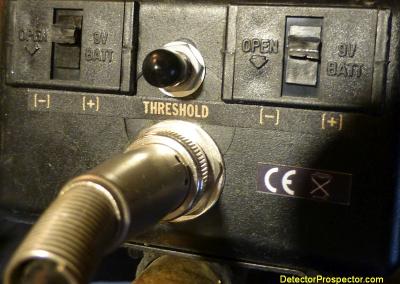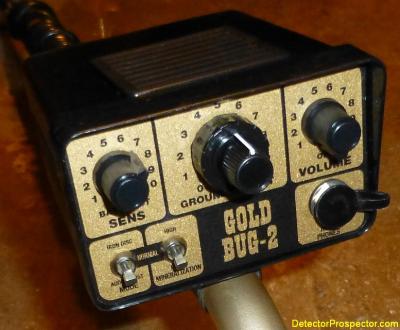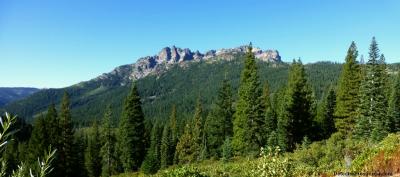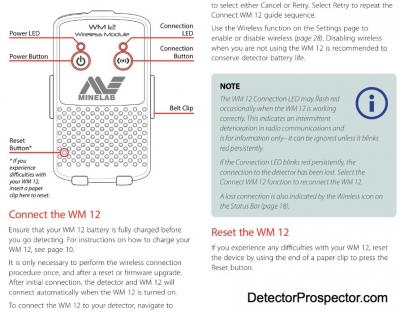-
Posts
19,725 -
Joined
-
Days Won
1,568
Content Type
Forums
Detector Prospector Home
Detector Database
Downloads
Posts posted by Steve Herschbach
-
-
Thanks for stopping by and providing that explanation Reg. Though I got a chuckle when you say:
"In simple terms, the assumption that a TDI doesn't have enough power to power a large coil is totally false. Instead, the interaction of the filtering inside the detector is the culprit. So, what does this mean? Simple, modify the filtering and you could use larger coils much easier."
Simple for you maybe. I think most of us lack your electronic skills!
-
 3
3
-
-
That is an oddity on the dual battery gold bugs. One battery basically runs the detector and it will actually function with one battery. The other acts as sort of an audio circuit power boost. So old trick was if your bug batteries run real low, swap batteries around and it comes back to life.
-
 2
2
-
 1
1
-
-
Exchange rates are what they are John and nothing White's can do about a strengthening currency for the U.S. and a weakening currency in Australia. White's has always been at a disadvantage because of their stupid marketing policies - witness your difficulty in finding a TDI Pro to buy in the UK. White"s by design made the TDI hard to buy from day one for reasons I may go into some day.
Back to the subject at hand, even Reg would tell you that the TDI was never designed to run large coils and it is just not what it does best. Sure, they can be made to work on the TDI but the circuitry is not intended to be running large coils effectively and that is why you do not see many large coils made specifically for the TDI.
-
 2
2
-
-
Seems like anyone that uses a Gold Bug 2 much flips that iron disc switch back and forth so much it eventually gets loose. There were also periods when the proper star washer did not get used at the factory, and they got loose real quick!
The fix is easy. There is a large shallow nut that holds the coil connection fitting in place below the battery doors. Remove this nut and washer. Of course the coil must also be disconnected.
Now grab the ground balance knob on the control panel and wiggle until the control panel pops loose in the housing. Pull the control panel and guts carefully out a couple inches. There are wires leading from the circuit board to the battery compartments and threshold knob so take it easy. I usually just pull out far enough to be able to see the nut on the backside of the disc switch inside the control box.
If you look at the iron disc switch on the control panel above you will see the round portion has flat sides. You need a tiny wrench to grab hold of this. There is also a loose nut on the backside (that's why the switch is loose) that you can turn with a tiny wrench or a firm grip with needle nose pliers. If the lock washer is missing you can't add one without desoldering wires, so the best bet is to just add a tiny drop of loctite and firm everything up.
Now reseat the control panel, lining the coil connector up properly with the hole, and reinstall the large washer and nut. Job done!
-
 4
4
-
-
The consensus I have seen from experienced detectorists everywhere is that they prefer detecting in damp as opposed to bone dry ground. I generally share that preference but I think it can go either way from a straight up performance perspective. For instance compressed dry forest duff would normally be invisible to the detector, but when wet there may be enough tannin content to set up a weak conductive signal. Something a PI would probably miss but a hot VLF or GPZ??? I know large fern root wads will give off a signal when wet more than dry.
The only issue I have had personally in the Sierras is that it seems no matter where you go even far off the beaten path there are tiny bits of steel flake and wire about. Most from old logging operations but some is like it just fell out of the sky. I can be in a spot where I would swear the only thing that could go beep is gold, and up comes a tiny bit of steel out of the duff. Very annoying.
No matter what after a good rain the air is sweeter and the forest quieter. There are few places I have ever been as nice as the Sierra Mountains.
-
 1
1
-
-
-
It depends on the mineralization level Paul. JP said "unless the surface mineralisation is Minimal." The type of mineralization JP is referring to is far more common in Oz than in the U.S. I have been fine letting my coil ride on the ground.
From the white paper at http://www.minelab.com/__files/f/266297/KBA_24-1%20ZVT%20Technology.pdf
"SATURABLE SOILS
In any of the above settings, it pays to swing the coil an inch or two above the ground surface if the soils are considered saturable (VRM). Saturable means that a detector ground balances well if the coil is raised and lowered down to about a few centimeters above the soil surface, and for the worst saturation, down to several centimeters, but not if the coil is swung up and down to a height lower than these saturation 'height thresholds' (e.g. Down to the soil surface). This is discussed if further detail below."
In other words, it it ground balances fine down to ground level, no problem. And then farther below it goes on to provide more technical details:
"In any of the above settings, it pays to swing the coil an inch or so above the soil surface if the soils are considered saturable (VRM). Saturable means that a detector ground balances well if the coil is raised and lowered down to about a few centimetres above the soil surface, and for the worst saturation, down to several centimetres, but not if the coil is swung up and down to a height lower than these saturation ‘height thresholds’ (e.g. down to the soil surface.) In addition, the degree of (VRM) soil saturation is considerably less for Difficult or Severe than Normal. As the metal detector coil is moved towards a soil, the transmitted magnetic field in the soil gets stronger. This causes a (very) small degree of VRM signal ‘saturation’ that happens to cause the resistive signal relative slope of the tilt to change. This is why the amount of VRM soil saturation is far less for Difficult and Severe than Normal. Soil saturation often requires the user to operate the coil several centimetres above the soil surface for best results."
I posted in even more detail about this in May at http://www.detectorprospector.com/forum/topic/970-minelab-gpz-7000-a-super-vlf-saturable-soil-tips/
The detector will tell you what to do. If the ground is making noise, slow down or raise the coil, or both.-
 2
2
-
-
JP just made a killer post on this subject on the Oz forum referenced earlier. Hopefully he will here - Great stuff!
-
I am going to refer this thread to Minelab. Bugs are always possible when software changes occur, and for obscure uses like dual wireless modules can get missed in testing. There is one way to test this, but it would be a hassle for you. You would have to reinstall the original firmware version and give it a go and see if problem repeats. If not that likely would be the issue, and if upon reinstalling the latest version of the firmware the problem occurred again, then that would pretty much nail it. And if that were the case I can almost guarantee it would get looked at by Minelab as bug and fixed in a future update. All still a bit of conjecture here but certainly a possibility.
-
 1
1
-
-
Nope. As I noted volume is one setting that may need tweaking. If 8 works better for you use 8.
Hearing is funny stuff. I do not have good hearing. But I do have a finely tuned sense of audio change and what constitutes a target. I have always run audio settings on any detector I use quite low from a volume standpoint. All I need to be able to do is barely hear it, but I sure can pick up instantly on variations in what I am hearing. Or so it seems to me. How can I know what I am not hearing?
Kind of like in Chris post. It is not necessarily that I do not hear the stuff that sounds like noise to him and drives him crazy. I just lower the level of the "noise" to where it is comfortable for me to listen to, and the noise goes in one ear and out the other - until that magical difference that indicates a signal.
-
Did you do the firmware update? And if you did, is this something that only started happening after the update?
One of these days I will treat myself to another module. I like the idea of running two.
-
Some glitch in the GPZ then. I wonder how many people have run it with dual modules? Have you tried just a single module? Maybe the software gets confused when changing modes with dual modules.
-
So is it both modules that are losing the signal, or just one?
-
-
All it takes is money. Remote control, needs to move around, needs to dig. Mars Rover with metal detector. Me, I want to be doing it physically. The exercise is worth more than the gold.
-
JP is in a class all his own. There are many people on the forum as good or better than I at both metal detecting and prospecting. I just blab more and so am more visible. But thanks Fred for mentioning me in the same breath as JP - I am flattered!
-
 1
1
-
-
Paul, all it is was is a mention of his using Normal at http://golddetecting.4umer.net/t22791-more-than-40-deeper#220355
I had been mulling my post about running hot for some time and the fact Normal was working well for Dale triggered my post. Part of the problem we face prospecting is the differences between Oz and the US and stuff being posted in one place being misapplied in another. Dales post gave me confidence that the GPZ can be run hotter in Oz than I might previously have assumed and that therefore running hot might have wider application than I had thought.
-
 1
1
-
-
Kevin has been around in the industry a long time, super knowledgeable, and just plain nice guy!
-
 1
1
-
-
Hello schiara,
I have always run exclusively in ground tracking mode. It has always worked well for me, even before the recent update, and so I have seen no reason to use manual. I was a manual only guy until I got my hands on the SDC 2300, which is always tracking, and it is obvious it does not hurt its ability to get the faintest targets. With the confidence built there I just decided early on to go with the tracking system from day one on the GPZ and have never regretted it.
JP made mentions about going to manual whenever digging targets but I have not. I do try and make sure my coil is well away from the hole and pick when I dig but I have not worried about it all that much. Seems if the pick was a problem then going over a can or big nails would be problematic also, and I sure go over my share of those with no seeming ill effects. Maybe I have been too lackadaisical in that regard. The good news is the update was designed to help with those sorts of things so it is doing nothing but get better.
I am no electronics wizard but I do not see anything about the way the GPZ operates that would preclude discrimination being a feature we see some day. For now I seem to be able to cherry pick fairly well if I have to just by digging sweet tones. No doubt things get missed but in a field full of nails it is either do that or break out the VLF.
-
Gold Hound, your post on the other forum inspired me to make my post here. Interesting on General and like all things just seems to depend on the ground. The ground I have been hunting as a rule is rather mild but sadly also rather shallow and gold not so large either. High Yield just seems to do the trick better here but then again it may just be my bad hearing does not allow me to equal you skill in that regard. I think I am a fairly good detectorist but never regarded myself as being top notch when it comes to getting my settings dialed perfectly. I rely on my prospecting skills and long hours to make up what I lack in tuning skills. I will try more with General however as I tend to get in a rut sometimes. Thanks for the tip.
-
 1
1
-
-
It's funny JP because I kind of assumed the same thing, but when I made the jump to 20 the machine just kept purring along. I should have gone there sooner like Ray.
-
I agree Chris, it runs surprisingly well maxed out. You and Ray are making me feel better about posting it as sometimes I do just think I'm nuts. It is reassuring to know there are other hot rodders out there. Thanks!
-
Hello Steve, I have been running the same settings as you recommend now since day one. I also looked at the ZED as an oversized VLF as far as the audio goes, but a VLF it is not. I am very happy with performance. Here in my neck of the woods the ZED is really hitting on the irregular shapes of the local alluvial gold, especially the smaller stuff. I dug a one pennyweight piece last weekend that was down twenty two inches and it sounded very nice, nothing iffy about it. No Smoothing, Normal, High Yield, Gain at Twenty and keep your swing mode low and slow. Just my thoughts, TRINITYAU/RAYMILLS.
Check my book out, Detecting for Gold, Adventures, Trips and Tips at
TRINITYAU.COM
You are the perfect example of a truly knowledgeable VLF operator Ray so no surprises there. I think a good VLF guy like you has a far easier time learning a GPZ 7000 than somebody who has only used Minelab PI detectors. I am glad to hear the Zed is hitting a sweet spot for you. Really an amazing machine. I have to have Chris weigh my smallest piece as it is too small to accurately weigh even on my digital powder scales. He has some analytic scales. It was no accidental find while digging something else either. I used to walk away from some tiny gold signals with the Zed in early days but have my pinpointing down pat now, and it is crazy how small that big coil will hit. I have no doubt when a smaller coil comes out for the GPZ it will match or beat the SDC2300 on small gold. And as you know it gets the depth on the big stuff for sure.
-
Norvic, I do have poor hearing and in fact wear hearing aids at times but not when I am detecting (they freak out) so who knows what other people hear compared to what I am hearing. No doubt some of this is to harsh for others and sounds fine to me? Again, that is why they give us controls to adjust. Even if we were all in the same location we all have personal differences to account for.







Detecting In The Sierras
in Detector Prospector Forum
Posted
Remember the only thing a detector senses is conductivity, magnetism, and EMI. Anything non-conductive and non-magnetic is invisible, just as invisible as air. All most forest duff or other organics like tundra in Alaska do is add space, just like holding the coil off the ground. But they can't act to "insulate" signals unless there is conductivity or magnetics involved.